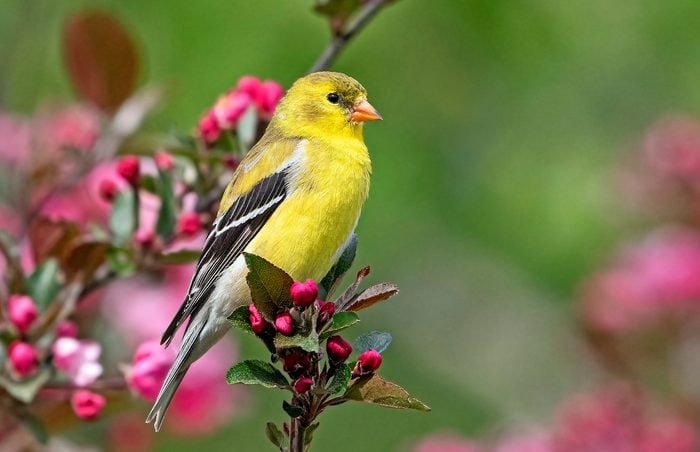
Red and Yellow Finch Birds
In the house finch and its relatives, adult males are decorated with touches of bright red (rarely replaced with orange or yellow), while females are brown with streaked patterns. House finches are common year-round from coast to coast in the United States and southern Canada.
The summer range of the purple finch covers southern Canada, the northeastern states and the Pacific Coast. The Cassin’s finch bird represents this group in the mountains of the West.
Yellow is the defining color of the goldfinches. The American goldfinch is the best known, found in summer all across the northern and central U.S. and southern Canada. In summer, males are unmistakable, featuring brilliant yellow with black trim, while females and winter males wear more muted colors.
The lesser goldfinch—yellow on the underparts and greenish or black on the back—is widespread in the West and Southwest. An uncommon California specialty is Lawrence’s goldfinch, with yellow accents mostly on its wings and chest.
Learn how to attract more goldfinches to your backyard.
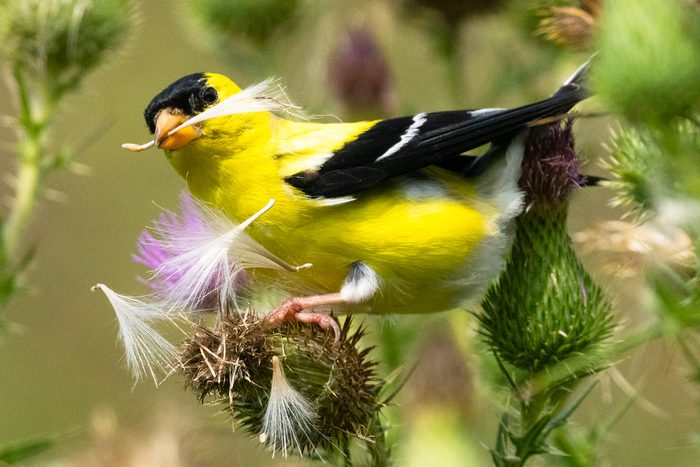
Finch Bird Diet
Red- and yellow-colored finches stick to a vegetarian menu far more than most birds. Other seed-eating birds, such as cardinals and sparrows, consume insects whenever they can, and raise their young nestlings mostly on a protein-rich diet. But for these two groups of finches, more than 95% of their diet year-round consists of plant material: seeds, buds, young leaves, flowers and small fruits.
They feed their young the same fare, mashing up seeds with their bills and mixing them with saliva so the baby birds can more easily swallow these offerings. The young birds do consume a few insects, but they’re mostly tiny ones picked up along with seeds.
Check out the best finch feeders to serve thistle seed.
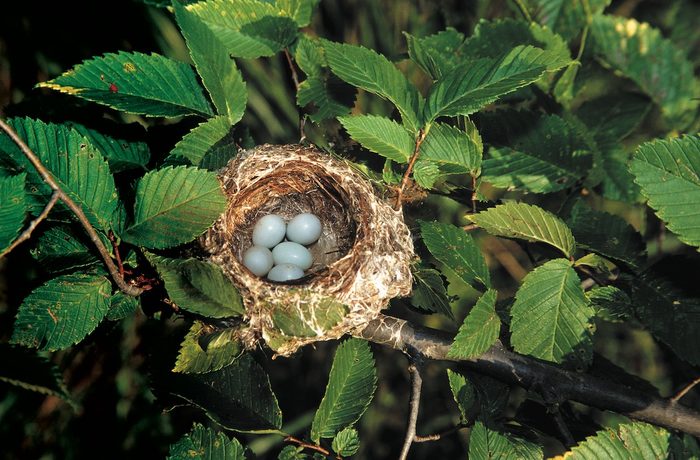
Finch Nesting Habits
These finches build compact nests with an open cup shape. The nests are usually hidden away in dense foliage of trees or tall shrubs. House finches are more adventurous in their site choices, which can include window ledges, spiny cactuses, hanging planters, holes in buildings or even wreaths on doors.
The female does all the nest-building, although her mate may carry some nest material, and then she does all the incubating of the two to seven eggs. The male helps out, though, by bringing her food while she’s incubating, in addition to bringing food for her and the youngsters during the first days after the eggs hatch.
Plant a goldfinch garden with their favorite plants
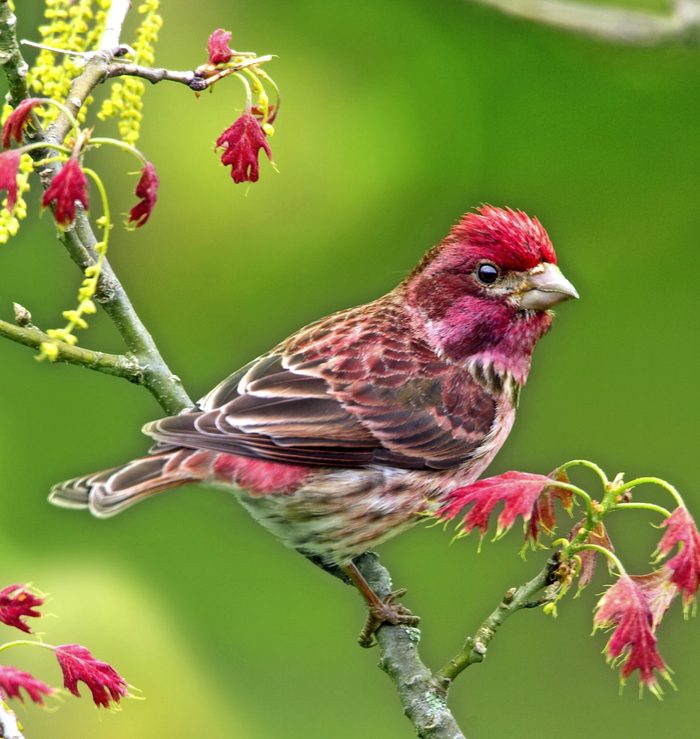
Finches Are Social Birds
Although flocks break up into pairs for the nesting season, all these finches are sociable at other times of the year. And most of them are at least partly migratory. When they travel, they migrate in the daytime, with small flocks moving along at about treetop level in a bouncy, up-and-down flight pattern.
Lesser and American goldfinches move out of the northernmost parts of their nesting range for the winter. Purple finches travel south in the eastern states in fall, sometimes in large numbers, and flocks of Cassin’s finches sometimes move downhill into western valleys and lowlands. Lawrence’s goldfinches don’t migrate very far south, but large flocks migrate east from California into Arizona during some winters instead.
So do house finches migrate? Yes and no. In their longtime western range they are mostly permanent residents. But in the East, where they have been present for only a few decades now, many of them migrate south in fall, a behavior that developed in a surprisingly short time.
Watch your feeders in winter for a common redpoll.
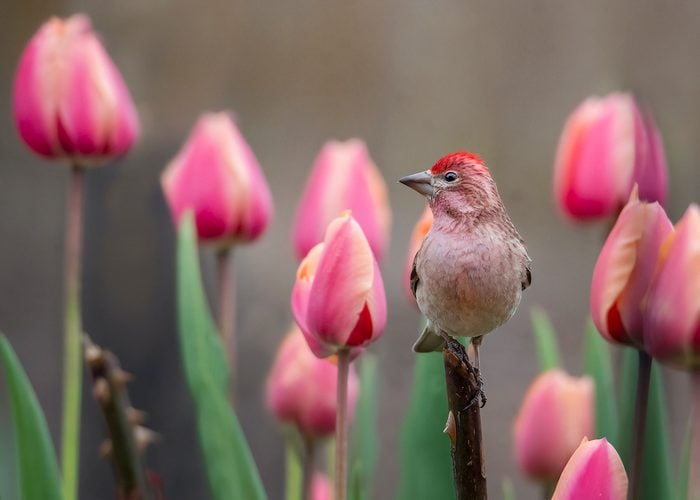
Finches are Excellent Singers and Mimics
Complicated and musical, the songs of finches are a delightful part of the spring and summer soundscape. Most of them feature fast series of twitters, warbles, plaintive whistles and a few harsh buzzes, all adding up to a cheerful sound. Male finches sometimes sing in flight, launching from a high perch and pouring out their notes while flying in a circle with slow, exaggerated wingbeats.
One of the most amazing finch traits is their ability to imitate the sounds of other birds. In a lesser goldfinch’s song, more than half the sounds may be mimicked from other species, such as wrens, robins, kestrels, phoebes and towhees, all in short phrases run together in rapid sequence.
Lesser and Lawrence’s goldfinches and Cassin’s finches use such mimicry a lot, while house and purple finches only occasionally do. In American goldfinches, mimicry is rare. But if you get to hear any of these finches singing, listen closely and you may be surprised at all the sounds you can pick out.
Pine siskin vs goldfinch: Here’s how to tell the difference.
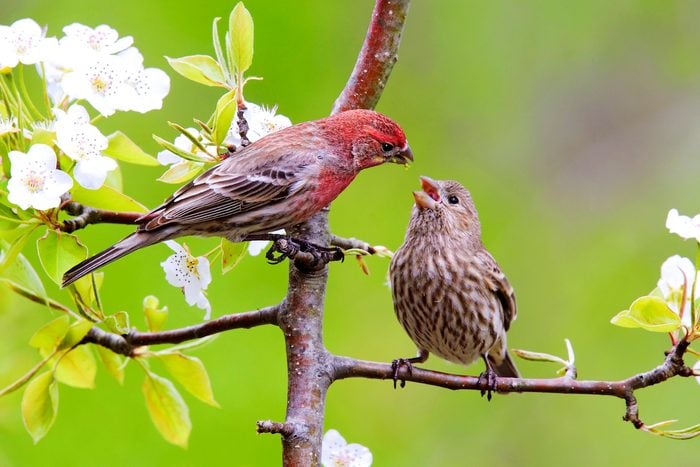
Newest Finch Bird Around
House finches are common in backyards and cities all over the East, but they weren’t always present. They were strictly residents of the West until 1940, when pet stores in New York started selling them as “Hollywood finches.” This was illegal, so some shop owners simply released their birds.
A few of the finches survived and established a small wild population. They gradually spread out from there to occupy all of the East over the next half-century, finally meeting their western cousins on the Great Plains during the 1990s.
Enjoy 20 super pretty pictures of finches.
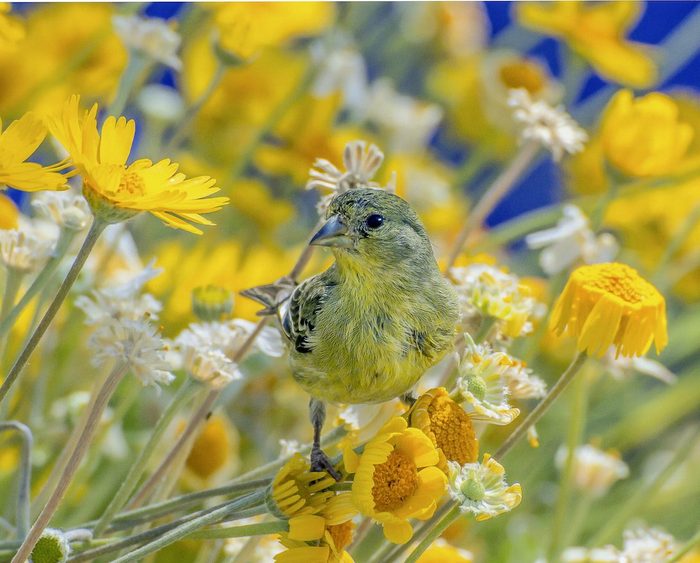
Easy Ways to Attract a Finch Bird
- Plant native flowers in the aster family, which includes sunflowers, daisies and coneflowers.
- Resist deadheading spent flowers. Instead, leave them to provide seeds for birds.
- Keep tube-style bird feeders filled with fresh Nyjer (thistle) seed year-round.
- Set up a shallow bird bath with trickling or dripping water.
Next, meet the rosy finch (and learn the best places to see one).
